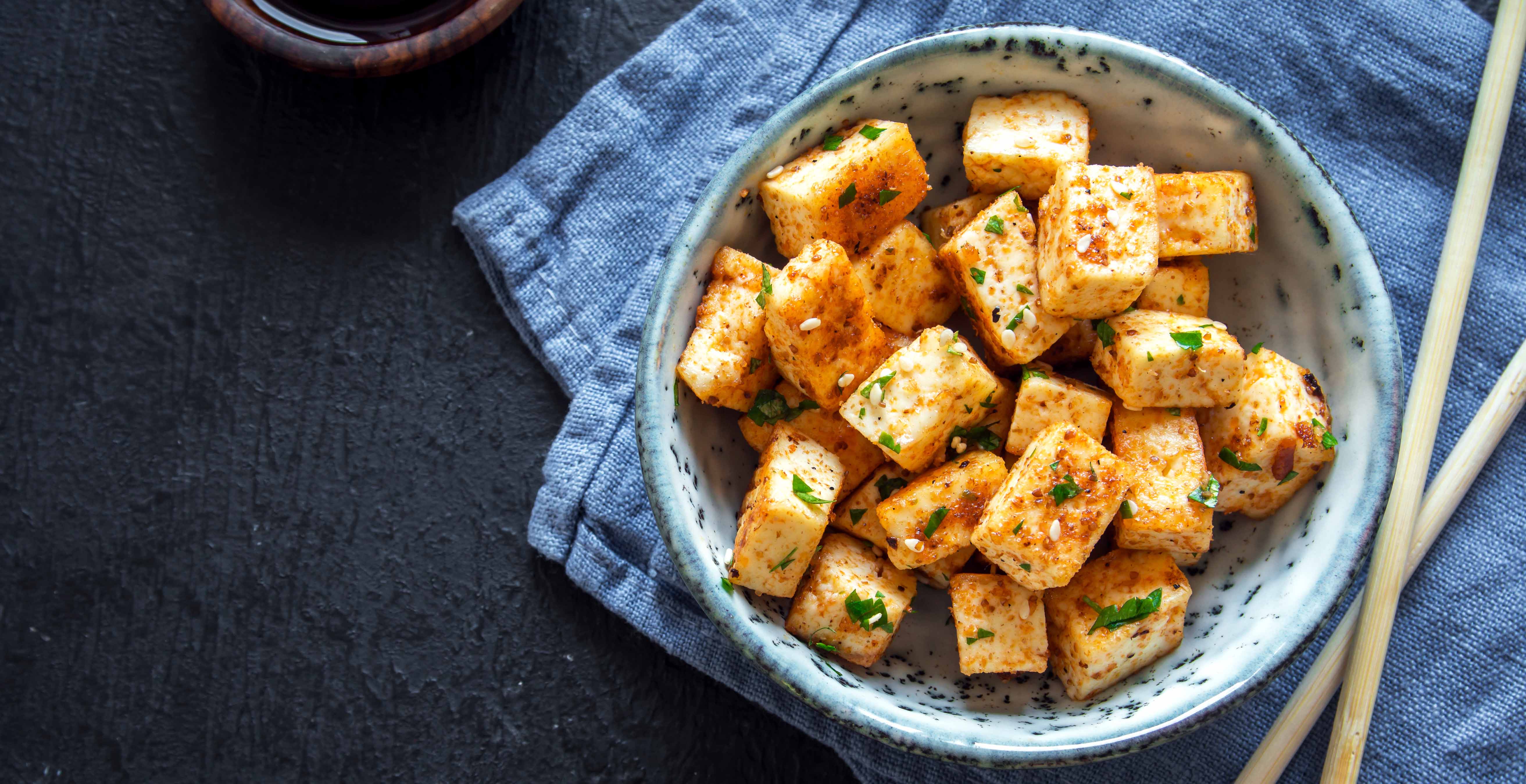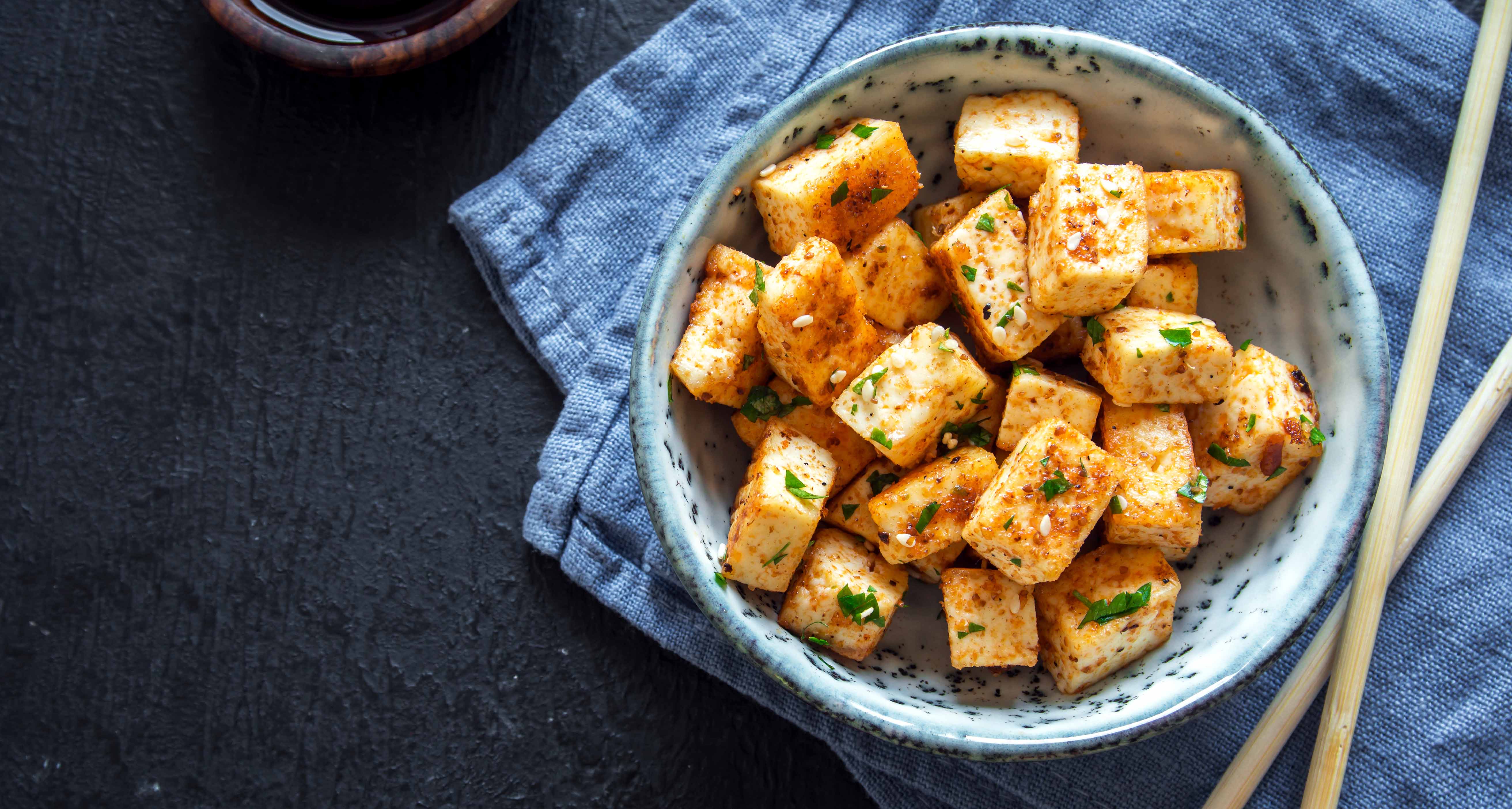Plant-Based Sources of Protein


Protein is an essential nutrient for the human body. It helps to repair cells and tissue, it builds enzymes needed for important hormones, and it acts as a building block for our muscles, skin, cartilage, and blood. Although it’s tempting to look to animal-based sources of protein as superior to plant-based versions, there are in fact many plant-based sources with more than adequate amounts of the protein we need to thrive every day. Plant-based sources of protein are not only protein-rich, they also contain impressive amounts of fibre, calcium, and iron (and often contain very little saturated fat.)
Chickpeas
From hummus to cumin and coriander-spiced chana masala, chickpeas (also known as garbanzo beans) are a versatile source of plant-based protein with a wide variety of culinary uses. A single cup of cooked chickpeas contains just over 15 grams of protein; try adding this tasty legume to the follow recipes:
- Grain salads: Chickpeas add plenty of satisfying protein to any grain salad (quinoa, farro, and bulgur are all great options.) Chickpea and grain salads can take on the most robust of flavours, particularly those inspired by Middle Eastern, Mediterranean, and Italian cuisine.
- Vegetable soups: Minestrone, cabbage and other broth-based soups are the perfect vehicle for freshly boiled or canned chickpeas. If adding dried chickpeas to vegetable soup make sure you have plenty of extra liquid; chickpeas need a good hour and half to two hours of cooking time.
- Roasted chickpeas: Roasted chickpeas make a memorable crunchy snack any time of day. Roast your own using your favourite herb and spice blend or buy them pre-roasted; not only are roasted chickpeas a highly nutritious snack they can also be used in place of traditional croutons in soups and salads.
Edamame
So much more than a tasty bar snack, pre-shelled edamame beans contain a whopping 23 grams of protein per cup. Edamame are young soy beans that can be found either in the pod or shelled (peeling apart un-shelled edamame is a highly satisfying activity, similar to breaking apart pistachios in the shell.) Try adding cooked and shelled edamame to:
- Grain bowls: Shelled edamame add protein, flavour, and a beautiful green colour to any grain bowl. Steam in the microwave or over the stove top and add the cooked edamame to Asian-inspired protein-rich grain bowls.
- Stir-fries: Pre-cooked edamame can be added to stir-fries towards the end of the cooking process. Edamame can take on brightly flavoured marinades, spices, and sauces and are equally at home in vegetarian or meat-based recipes.
- Edamame-hummus dip: Add cooked edamame to homemade or store-bought hummus, giving the dip a quick blitz in the food processor or blender before serving. Top the beautifully green dip with a drizzle of olive oil and plenty of chopped fresh herbs.
Tofu
Intimidated by the thought of cooking tofu at home in your own kitchen? Don’t be! Tofu is much easier to cook than you think and it’s certainly more forgiving than meat, fish, and poultry. Plus, one 150 gram serving of firm tofu contains more than 12 grams of protein and is very low in saturated fat. If you’re learning how to prepare tofu it’s easiest to begin with the baking method; all you need to do is slice the tofu into slabs, add it to a rimmed baking dish and cover with a marinade (such as soy-ginger or Italian-inspired herbs and garlic) and then bake in a hot oven for 20-45 minutes (depending on how chewy you like your tofu).
- Baked tofu: Add baked firm or extra-firm tofu to stir-fries, curries and salads (try batch-cooking baked firm tofu at the beginning of the week and adding to recipes as needed.)
- Scrambled tofu: Replace all or up to half of the eggs with crumbled firm tofu next time you make scrambled eggs. In search of that golden sunny egg colour? Add a generous pinch of turmeric to the scrambled tofu.
Lentils
Although lentils might seem like an innocuous ingredient, a single cup of boiled lentils contain more than 18 grams of protein! Puy, green, and brown lentils can be used in many different recipes; particularly soups, salads, and pasta dishes:
- Canned lentils: Canned lentils are a simple way to add plenty of protein and fibre to many different types of recipes. Simply drain, rinse and stir into soups, stews, and pasta sauces.
- Minced meat: Minced (or ground) meat, the kind used for hamburgers, shepherd’s pie, and Sloppy Joe’s, can be partially substituted with lentils for at least half the meat that a recipe calls for.
